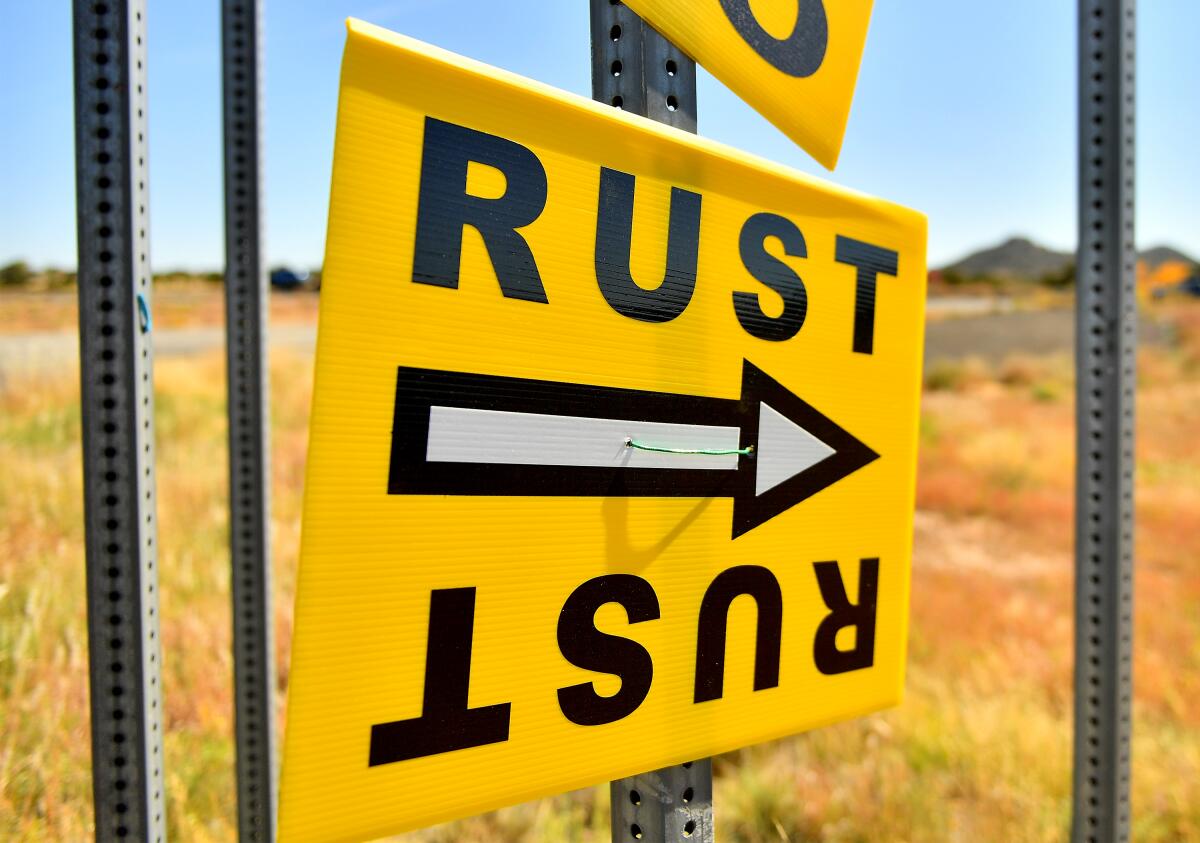Letters to the Editor: Producers want to save money. That means dangerously long work days for crews

- Share via
To the editor: The tragedy on the set of “Rust” in New Mexico, and the contract negotiations between IATSE, the union representing Hollywood crews, and the major studios, are more closely related than they may appear at first. (“How Hutchins’ death has become another rallying cry for film set safety,” Oct. 24)
Although “Rust” is a low-budget production with a tight shooting schedule, unreasonable time pressures are universal in Hollywood. As a veteran film industry professional with more than four decades of experience on everything from commercials to feature films, I’ve seen these pressures firsthand.
More often than not, during pre-production, the first assistant director (AD) will draft a shooting schedule based on the specific demands of the shooting script. Invariably, the AD’s number is more than the producers and the studio are willing to finance. Far more often than not, the producers’ target number of shooting days is driven by a budget that is based on financial considerations, and not what is spelled out in the approved shooting script.
The AD then must somehow fit the necessary workload into an arbitrarily truncated schedule. This schedule contraction, more than any other factor, is what drives the ongoing reality of 14-hour workdays, exhausted crews and lapses in prescribed safety protocols.
Erik Nash, South Pasadena
..
To the editor: I hope someday to see the movie probing the helter-skelter, on-the-cheap attempt to make “Rust” with Alec Baldwin as both its grizzled star and producer. My freebie suggestion is that the meta-movie about that hapless effort be called “Rusted.”
It’s shocking to learn that the producers ignored the walkout by set workers protesting the failure to adequately compensate and take care of them, instead electing to steam ahead with hurriedly assembled non-union replacements.
Had the producers stopped to address those myriad labor concerns, the death of cinematographer Halyna Hutchins might have been avoided.
Sally Stein, Los Angeles
..
To the editor: Speaking as someone who has been in the military and learned how to disassemble and reassemble a weapon, I am astonished that after the death of actor Brandon Lee on a film set in 1993, another crew member has been accidentally killed by gunfire.
This is so simple to prevent that this incident reeks of negligence.
Our wonderful weapons makers can design guns for use on set that would not allow the insertion of a round of any caliber currently in production, and then make rounds for them that only produce noise and smoke.
It can be done. Why wait for another accident or death?
Don Tonty, Los Angeles
..
To the editor: Why is it so important in imitating life that real guns need to be used in movies?
As a teenager watching “Psycho,” I was utterly terrified, but of course I knew that when the movie was over, the actors and crew were able to go home.
Daina Krigens, Encinitas
..
To the editor: I’ve been in the Screen Actors Guild for more than 25 years, and there is absolutely no reason whatsoever to have live ammunition anywhere near a film set — none whatsoever!
Ray Uhler, Laguna Niguel
More to Read
A cure for the common opinion
Get thought-provoking perspectives with our weekly newsletter.
You may occasionally receive promotional content from the Los Angeles Times.






